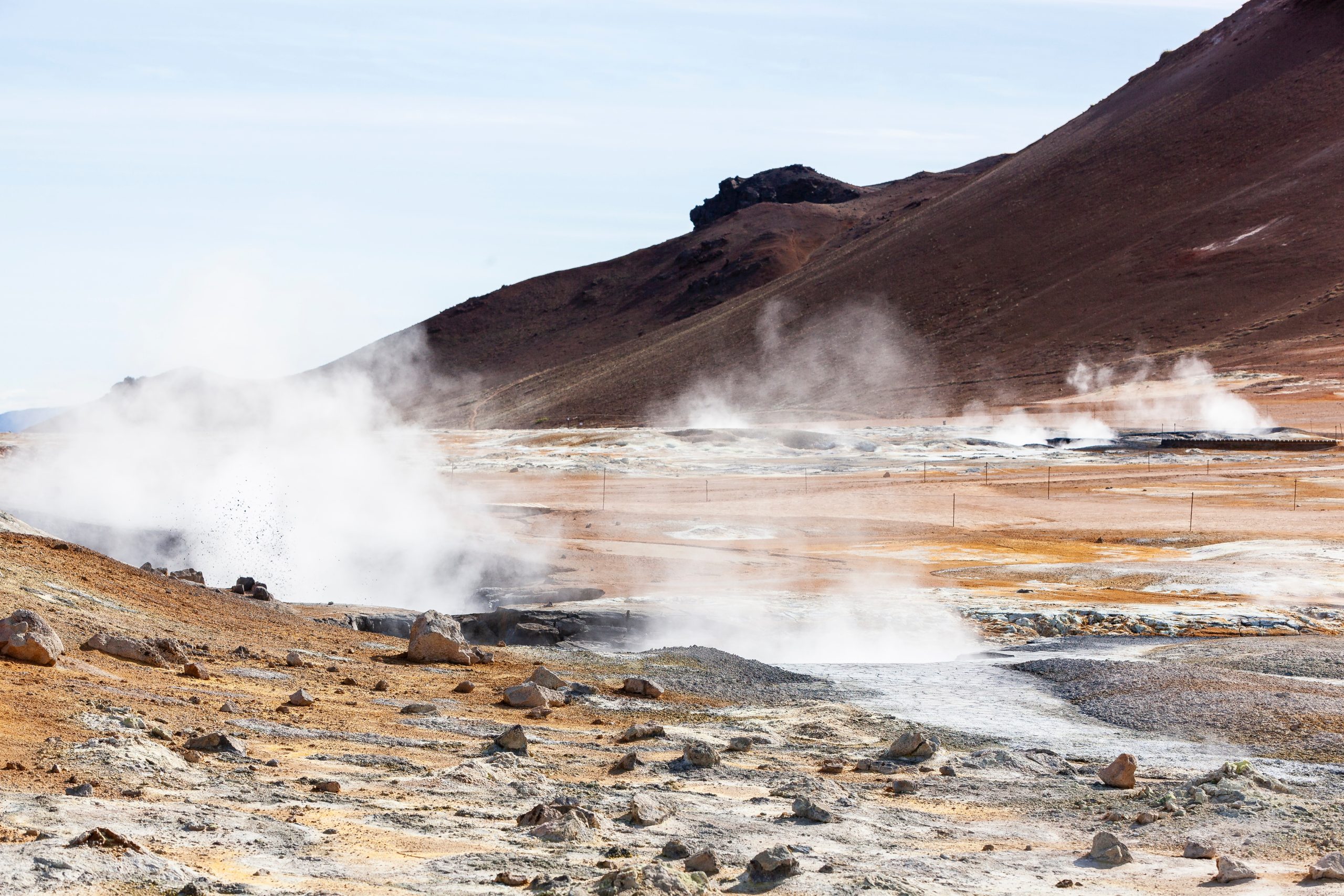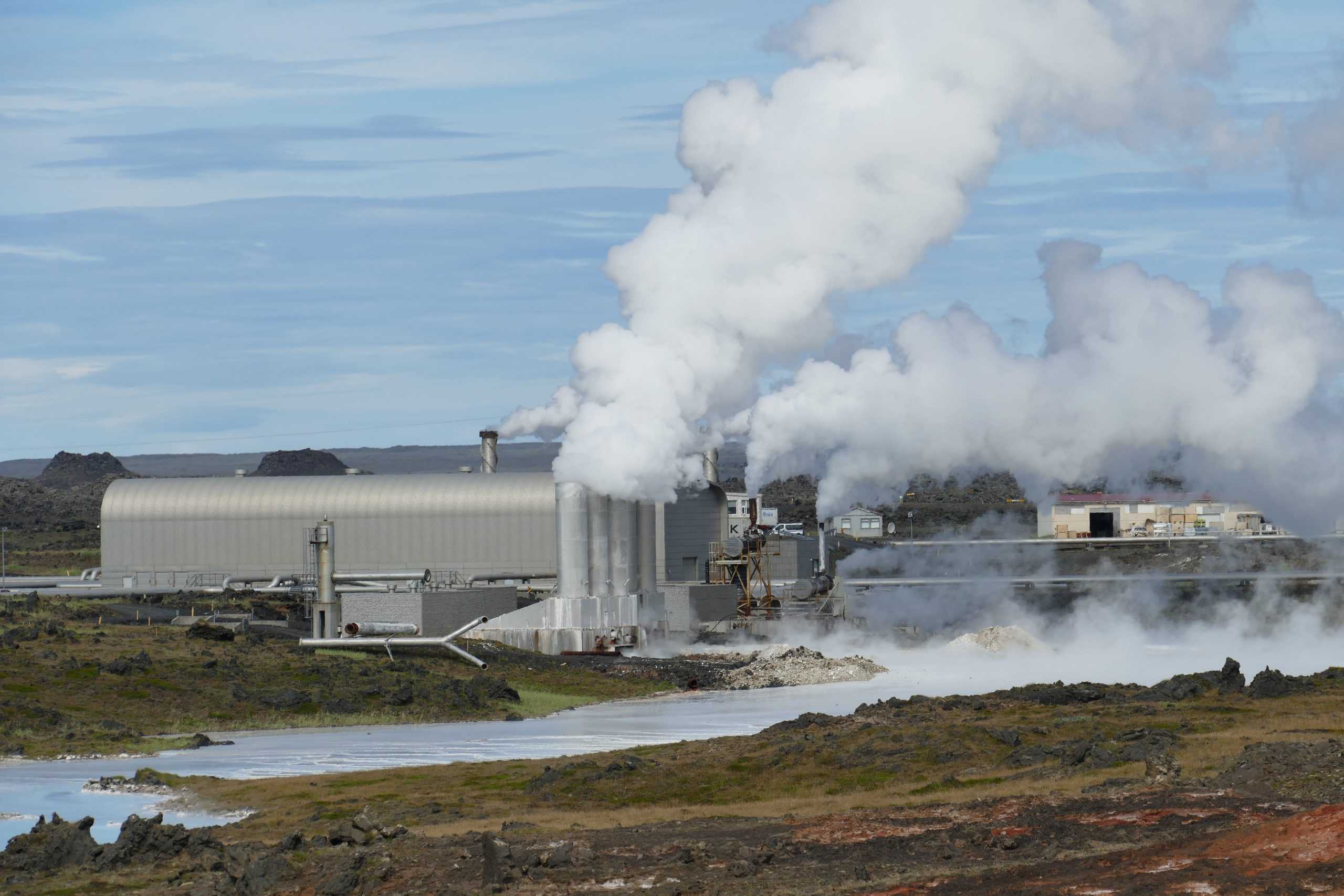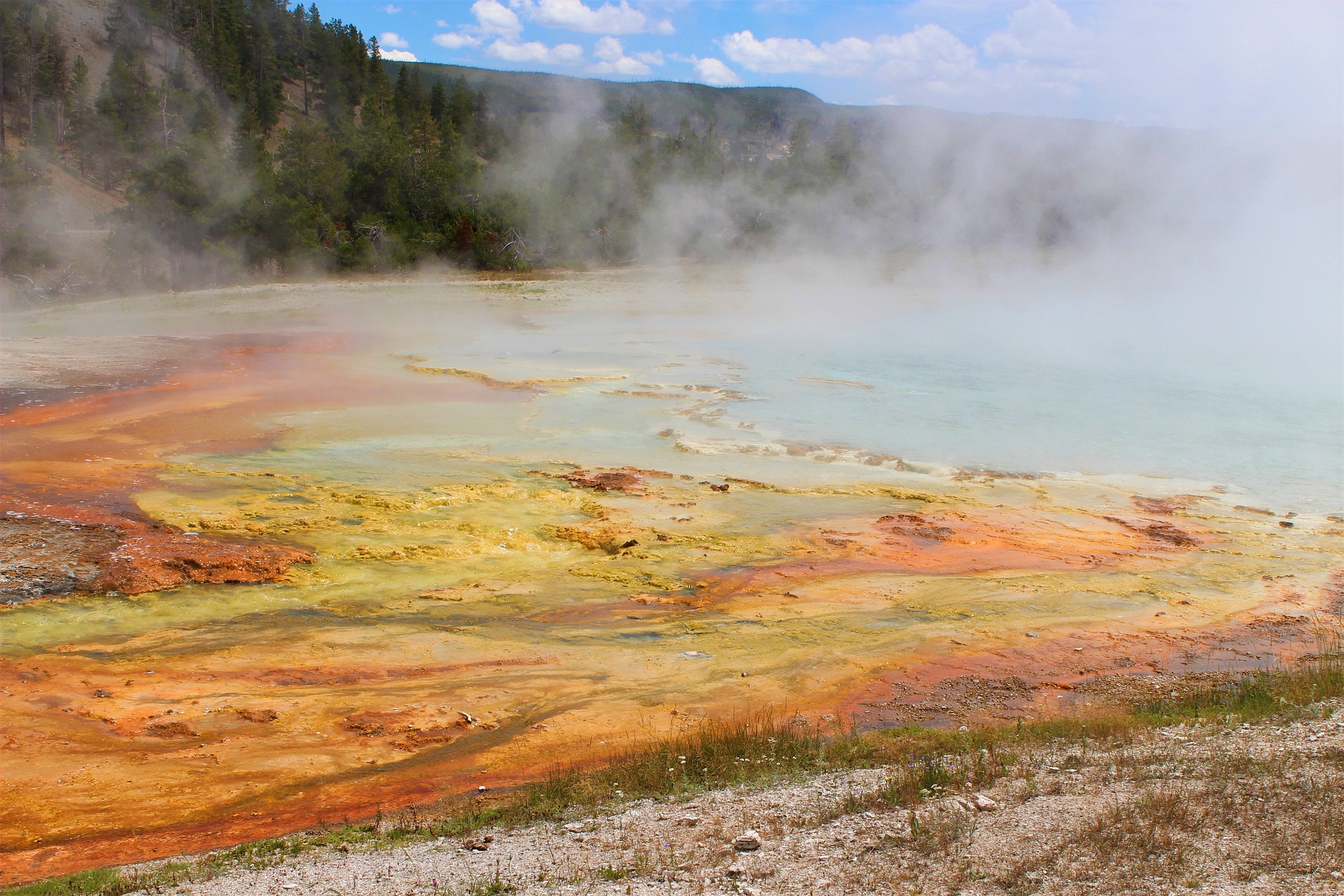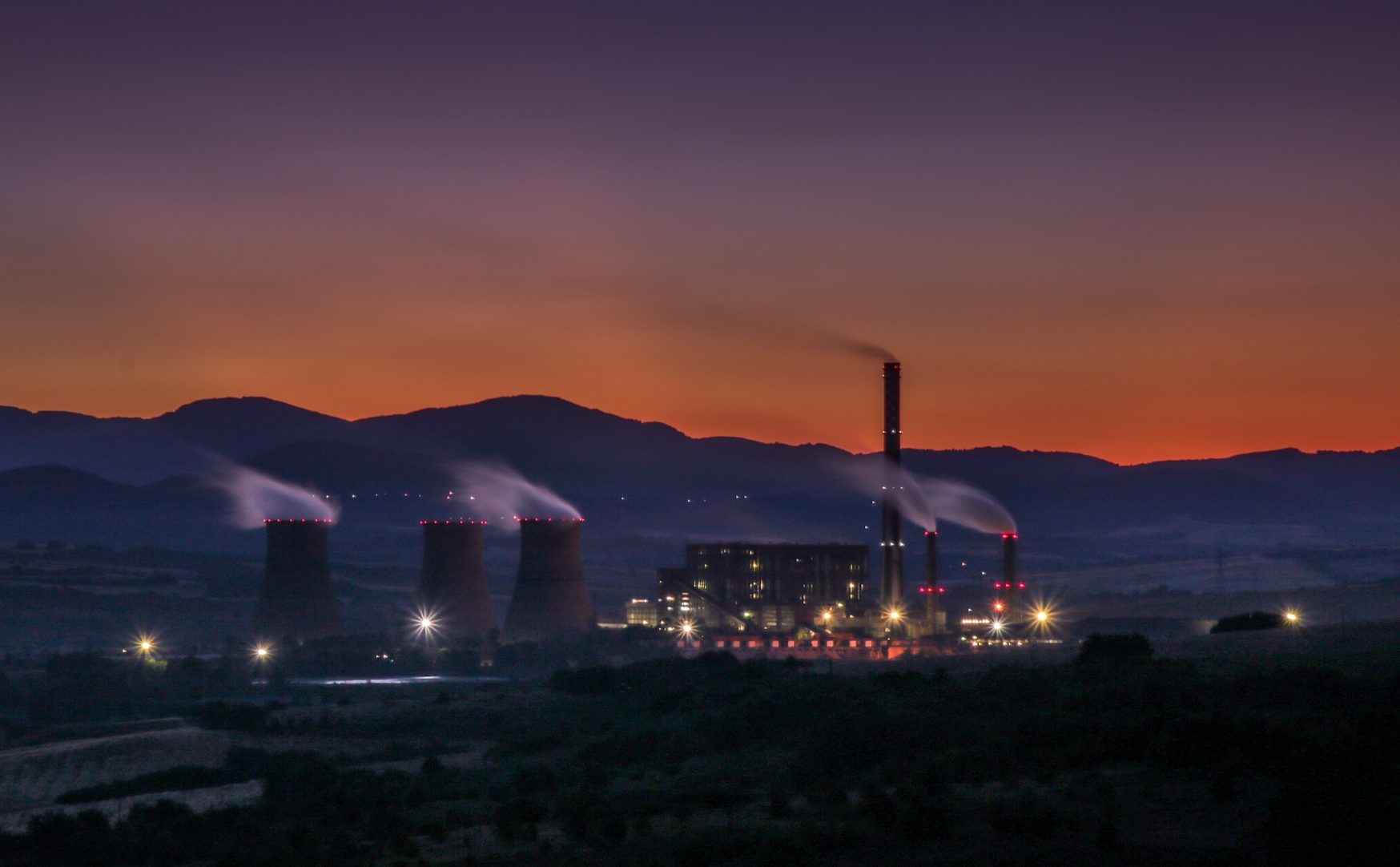Geothermal Energy: Challenges and Potential

Geothermal electricity plays an important role in turning cities are sustainable while it’s cleaner than fossil fuels – and underground.
Billboard
Skyscrapper
Halfpage
For thousands of years, humans used geothermal energy for cooking and heating. But in the light of climate change, this energy type is now experiencing more attention despite its shortcomings. How could we use thermal energy in a sustainable way in cities and beyond?
Energy from underneath
Geothermal energy is power derived from the Earth’s internal heat. It comes from the space between the rock and fluids beneath the crust of the Earth. Both shallow ground and spaces several kilometres deep can provide geothermal energy. Even magma, the extremely hot molten rock found closer to the Earth’s core, can provide this energy type. Underground reservoirs of steam and hot water can be used to generate electricity or to heat and cool buildings.
For example, a geothermal heat pump system is a good option of easing the constant temperatures just three metres below the Earth’s surface. It is enough to heat a home in the winter or extract heat from a building in summer, transferring the heat back into the ground. To heat larger homes and offices, geothermal water from deeper in the Earth holds a lot of potential. Similarly, the hot water could help with growing plants in greenhouses or to melt snow on roads and sidewalks.
To produce geothermal electricity, it is necessary to drill a well that is around 1.5 kilometres deep. By pumping fluid through a loop, it is possible to tap steam and very hot water from underground reservoirs, which then drive turbines linked to electricity generators. The first geothermally generated electricity was produced in Italy in the year 1904. But humans have used this energy form for much longer, for example by getting warm water from hot springs. Iceland in particular is known for using its geothermal energy to heat buildings and even swimming pools.

Geothermal energy: 80 percent cleaner than fossil fuels
Geothermal energy offers many advantages. Its extraction does not involve the burning of a fossil fuels. Geothermal fields for energy production only produce about one sixth of the CO2 of that of a natural-gas-fuelled power plant. Binary geothermal plants release next to no emissions. These will be more and more common in the future. They work by passing the hot water by a secondary fluid with a much lower boiling point than water. This causes the secondary fluid to turn into vapour, which can drive a turbine.
In addition, geothermal energy – unlike solar and wind energy – is always available. It can be extracted every day of the year. It counts as a renewable energy, even though sites can cool off. In general, they provide heat for decades. By taking advantage of the energy stored in earth, geothermal systems act as a heat sink in the summer and a source of warmth in the winter. They do not contribute negatively to climate change.
At the same time, geothermal energy is inexpensive in comparison to fossil fuels. Savings from the direct use of geothermal energy can be as much as 80 percent. If the system used to extract the energy is powered by renewable energy as well, costs can sink further, as will CO2 emissions.
Not available everywhere
However, geothermal energy brings some environmental problems. Extracting this energy in the form of hot water or vapour releases hydrogen sulphide. This gas smells like rotten egg, making it very unpleasant to work with.
Another concern around geothermal fluids is the disposal of the fluids, which can contain low levels of toxic materials. It is difficult to dispose these fluids. Consequently, geothermal energy leads to some environmental concerns.
Most drastically, the drilling and injection of fluids into the earth can cause small earthquakes in the surrounding areas. In combination with land use changes, noise and sight pollution, and the production of foul odours, the power plants are not popular. Typically, the plants only drill about 100 metres deep, which has minimal effects on the environment.
Since geothermal energy is not available everywhere, it cannot provide a large-scale solution for every country. Production is only possible in areas near tectonic plate boundaries. Sites might cool down after a lot of use. Setting up a geothermal plant is expensive, with high wear of drills and tools due to the aggressive environment. But once the geothermal energy is available, costs between 5 and 10 cents per kilowatt hour mean that the energy is about as cheap as coal.

Medium Rectangle
Halfpage
Climate Migration – topos 123
Our current topos-magazine deals with the critical phenomenon “climate migration”: What describes it exactly, when does it happen and what can be done about it?

The challenge of retrofitting for geothermal energy
Currently, the United States are the world’s largest producer of geothermal electrictiy. The geysers north of San Francisco in California provide the largest geothermal development in the world. Steam energy provides a lot of potential for power generation. Iceland currently derives around 25 percent of its energy from its 25 active volcanoes and 600 hot springs.
The implementation of geothermal systems is moving relatively slow due to challenges in how to best use it. In new construction, it is not difficult to install geothermal systems, but retrofitting geothermal systems into existing buildings proves to be a challenge. In many urban areas, steam radiators heat the existing building stock, using a single pipe. Geothermal energy requires two pipes and a different set-up for the heat pump. Therefore, a complete conversion is often necessary when switching to geothermal energy. Through creative thinking, existing infrastructure and new systems provide flexible ways of integrating geothermal energy.

Rethinking ways of heating and cooling cities
In future, geothermal energy might play a much bigger role in countries with lots of geothermal activity. Areas with hot springs, geysers, and volcanic activity offer the most geothermal resources, while heat from under the Earth’s system is present in every country.
Cities around the world are considering ways of reducing their CO2 emissions, many of which come from energy production and use. Production and management of sustainable energies is a key aspect for modern urban development. In the European Union, 40% of energy consumption and almost the same number of CO2 emissions come from heating, cooling and hot water provision. Around 80 percent of energy still comes from coal and oil combustion. Countries such as Iceland, Italy, and New Zealand have ideal conditions for geothermal plants for sustainable energy production.
The change towards geothermal electricity could play an essential role in the sustainable transformation of cities. New York City already heats many buildings through a giant network of steam pipes, and China is considering ways of applying a geothermal system. In Copenhagen, almost 100 percent of energy comes from heat, even though the city burns waste rather than using geothermal resources. With gas prices going up and the costs for geothermal systems going down, more and more cities and households will rethink the way they power, heat, and cool their buildings.











